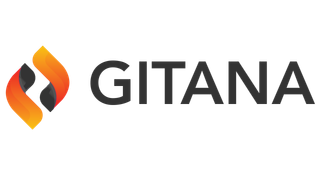Found 532 results for "gitana 4.0 developers api resources authentication post-auth-impersonate-domainid-principalid"
The search executed in 0.0027 seconds. That's fast.

|
Gitana 4.0 / User Interface / Projects / Delete a ProjectDocumentation Reference Learn how to safely delete a project by managing settings and using the Delete Project Wizard. Backup recommended. (Gitana 4.0)
Score: 2.633
|

|
Gitana 4.0 / Self Managed / Containers / UI ServerDocumentation Reference Optimize your editorial experience with Cloud CMS UI Server, a flexible Node.js app connecting seamlessly via API calls. (Gitana 4.0)
Score: 2.6229
|

|
Gitana 3.2 / Guide / Guide / Integrations / Amazon Web Services / Amazon TranscribeDocumentation Reference Integrate Amazon Transcribe seamlessly to convert audio to text effortlessly using Cloud CMS. (Gitana 3.2)
Score: 2.6165
|

|
Gitana 4.0 / Content Engine / Integrations / Amazon Web Services / Amazon TranscribeDocumentation Reference Enhance your app with Amazon Transcribe's ASR to convert audio to text, seamlessly integrated with Cloud CMS. (Gitana 4.0)
Score: 2.6165
|

|
What is a Data Product Platform?Blog Post Transform your messy data into structured, reusable data products with Gitana, optimizing internal and customer-facing datasets to drive business solutions.
Score: 2.5896
|

|
Gitana 3.2 / Guide / Guide / ScriptingDocumentation Reference Optimize your Cloud CMS server-side scripting with flexible JavaScript, Handlebars, and FreeMarker support. (Gitana 3.2)
Score: 2.5029
|

|
Gitana 4.0 / Content Engine / ScriptingDocumentation Reference Enhance your server-side scripting with Cloud CMS's API for custom actions, rules, and dynamic behaviors. (Gitana 4.0)
Score: 2.5029
|

|
Gitana 3.2 / Guide / Guide / Application Server / Authentication / AdaptersDocumentation Reference Explore our guide on authentication adapters, including Custom, Default, JWT, and Session, for comprehensive integration details. (Gitana 3.2)
Score: 2.5017
|

|
Gitana 3.2 / Guide / Guide / Application Server / Authentication / ProvidersDocumentation Reference Explore comprehensive authentication providers including CAS, Custom, Facebook, GitHub, Google, and more. (Gitana 3.2)
Score: 2.5017
|

|
Gitana 4.0 / Developers / Application Server / Authentication / AdaptersDocumentation Reference Explore comprehensive guides on Custom, Default, JWT, and Session authentication adapters. (Gitana 4.0)
Score: 2.5017
|

|
Gitana 4.0 / Developers / Application Server / Authentication / AuthenticatorsDocumentation Reference Explore custom, default, and session authenticators in Gitana app server documentation for robust authentication solutions. (Gitana 4.0)
Score: 2.5017
|

|
Gitana 4.0 / Developers / Application Server / Authentication / ProvidersDocumentation Reference Explore authentication provider options including Custom, Google, Keycloak, Local, and SAML 2.0 for your app. (Gitana 4.0)
Score: 2.5017
|

|
Gitana 3.2 / Guide / Guide / UI Developers Guide / Contexts / project-manage-contextDocumentation Reference Explore comprehensive project management with tools for settings, themes, UI, and developer resources. Streamline your workflow today. (Gitana 3.2)
Score: 2.4965
|

|
Gitana 4.0 / Developers / User Interface Customization / Contexts / project-manage-contextDocumentation Reference Efficiently manage and configure projects with tools for settings, roles, UI customization, and development features. (Gitana 4.0)
Score: 2.4965
|

|
Gitana 4.0 / Self Managed / KubernetesDocumentation Reference Discover our upcoming Kubernetes 4.0 configuration files. Contact support@gitana.io for access. (Gitana 4.0)
Score: 2.4877
|

|
Gitana 4.0 / Content Engine / SecurityDocumentation Reference Ensure secure content access with Cloud CMS's robust security engine, offering fine-grained permissions and access control policies. (Gitana 4.0)
Score: 2.4773
|

|
Gitana 3.2 / Guide / Guide / Docker / Configuration / UI ServerDocumentation Reference Cloud CMS UI Server: Extensible Node.js app for a robust editorial experience, integrates with the Cloud CMS API. (Gitana 3.2)
Score: 2.4334
|

|
Gitana 3.2 / Guide / Guide / Getting StartedDocumentation Reference Discover Cloud CMS, an API-first solution for managing and publishing content for websites and mobile apps. Start now! (Gitana 3.2)
Score: 2.3933
|

|
Gitana 4.0 / Reference / Types / WorkflowDocumentation Reference Explore the Workflow API to streamline and automate your tasks on the Gitana platform efficiently. (Gitana 4.0)
Score: 2.3928
|

|
Gitana 3.2 / Guide / Guide / Application Server / Installation / Standalone InstallationDocumentation Reference Install the Cloud CMS Application Server with ease. Connect using Node.js, Git, and simple setup instructions. (Gitana 3.2)
Score: 2.3867
|

|
Gitana 4.0 / Developers / Application Server / Installation / Standalone InstallationDocumentation Reference Set up a Cloud CMS Application Server using Node.js and Git to manage your content effortlessly. (Gitana 4.0)
Score: 2.3867
|

|
Gitana 3.2 / Guide / Guide / Multifactor Authentication / Providers / Duo SecurityDocumentation Reference Integrate Duo Security for MFA with Cloud CMS using Auth API to enhance protection. (Gitana 3.2)
Score: 2.3828
|

|
Gitana 4.0 / Content Engine / Multifactor Authentication / Providers / Duo SecurityDocumentation Reference Cloud CMS integrates Duo Security for Multifactor Authentication using Auth API keys for secure configurations. (Gitana 4.0)
Score: 2.3828
|

|
Gitana 3.2 / Guide / Guide / Docker / Upgrades / 3.2.89Documentation Reference Upgrade to Cloud CMS 3.2.89 for ARM64 support and improved performance. Ensure MongoDB 4.4+, Redis 6.x, and API cluster restart. (Gitana 3.2)
Score: 2.3569
|

|
Gitana 3.2 / Guide / Guide / Docker / Upgrades / 3.2.90Documentation Reference Upgrade seamlessly to Cloud CMS 3.2.90 with enhanced ARM aarch64 support and new MongoDB/Redis requirements. (Gitana 3.2)
Score: 2.3569
|
